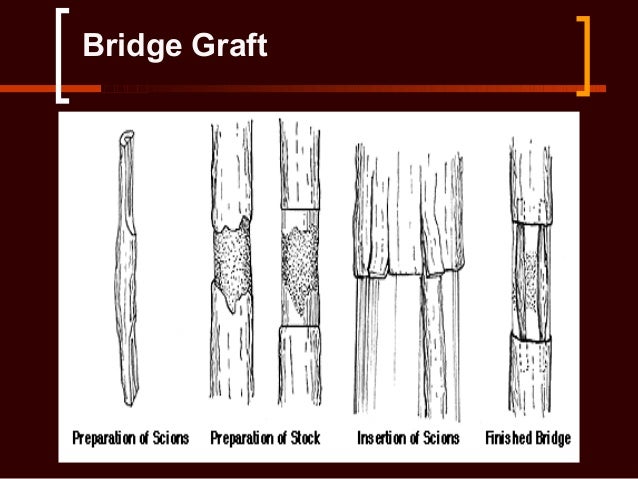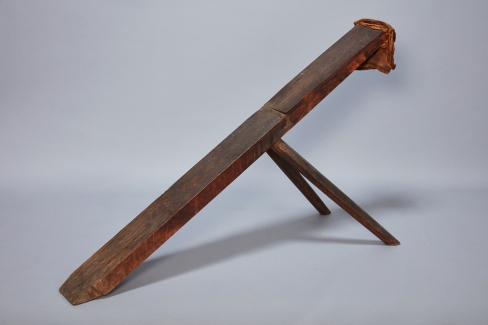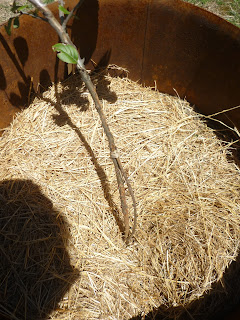The first week of the year started cool and finished with the hottest day since WW11 started. There was a little rain but finally the pump was needed daily to water the gardens.
While we were away we had a disaster - the guinea pigs free ranging in the dwarf tree orchard did what any hungry guinea pig would do (but I didn't realise they could do) and leapt up and over the tree guards - made from 1/3 of a 44 gallon drum - and gnawed the bark all around the trees.
The only chance of saving any of the trees was a bridging graft. To do this I cut a sucker from an apple tree about four cms longer than the debarked section and cut a diagonal on each end on the same side so that it would sit flat on the tree.
I have never grafted before but armed with whittling knife and some old tights as binding I put six grafts in five trees. I will be very excited if even one works!
With help from the kids we caught ten guinea pigs and returned them to the cages in the lawn where hopefully they get more attention and feed.

On Wednesday I went to our other property to see how the gardens and orchards there were going. The tomatoes were going gangbusters. I always grow my tomatoes up a piece of bailer twine attached to the roof of the caged garden. I also pinch out all the laterals so there is a single growing stem. This means that all the tomatoes are supported, up off the ground and with enough air flow around them. This method also allows me to plant more plants in a bed.
The zucchinis are often the first summer crop to fruit. This one is a yellow variety which I am trialling. I usually prefer the Costata which grows well in a cooler climate. While zucchinis can usually over-produce we have an excellent solution - feed them to the pigs.
The next job was to summer prune the stone fruit. When I planted these trees dwarf varieties were far less common and so it is a challenge to stop the trees growing through the roof. In Spring the tree puts lots of energy into growing new branches and these use up lots of energy and stifle the tree with new leaves. This year I decided to cut these branches out so the tree can concentrate on developing the fruit. Last year I did one of the apples and after pruning the stone fruit I noticed that this tree has less fruit than the others so I shall have to find out whether my pruning has this effect.
In the apple orchard the first fallers needed collecting for the pigs. To assist with pest control all the fallen fruit is taken. We have had a problem with brown rot and removing any diseased fruit helps keep this in check. I also collected a sackful of lemons and tangelos for making cordial.

Fleshing Board - mine is a curved one but works the same way.
I was asked to make a fleshing bench for a friend. This is used to put a hide on and work it to remove the flesh. To make one I needed to drop a tree with a diameter of about 30cm, cut off the bottom 2.4m and debark it. By using a Stringybark the bark peels off fairly easily. Then I used wedges to split the log in half. When I got it home I made a removable stand from a stool frame that I had rescued from the tip.
Fleshing Bench and Stand Mark 2
One of our sheep is a Dorset. The fleece is not much use for spinning so Michelle uses to make batting - the felt for a quilt, perhaps. So this week so painstakingly teased out the fleece and evenly spread on piece of plastic. The fleece was wrapped in a nylon curtain and hot soapy water poured onto it. This was rubbed into the fleece so it flattened and the fibres enmeshed. Once this was done the felted fleece was placed on a raised flyscreen so the air can dry it.
The original wool at the top and the felted batt at the bottom
This week we also harvest the redcurrants. We have two bushes that are always laden at the start of the year. With a tag team of children they were picked within an hour and the currants were then washed, drained, cooked and then the flesh put through a seive so that only the juice remained. This was then cooked until the setting point was reached. We tested this by putting a saucer in the freezer, periodically removing it and putting a drop of the mixture on it. Once the cooling effect of the plate had reduced the temperature of the jelly the saucer was tipped. When the jelly stayed put the tipping point had been reached. This year's harvest made 15 jars of jelly.








No comments:
Post a Comment